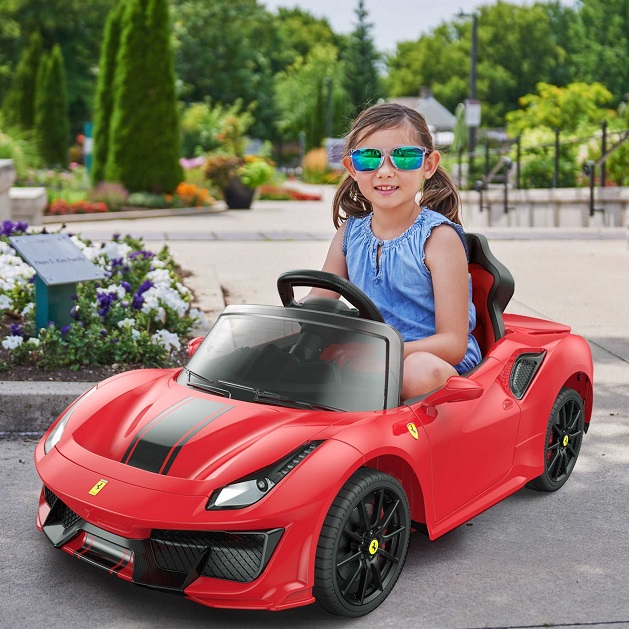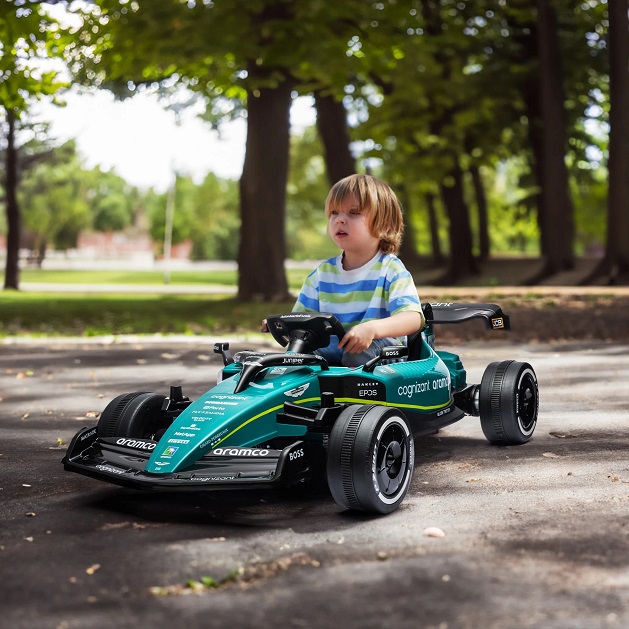Ride-on cars are so much more than simple playthings. They’re an exciting way for children to explore the world around them. These miniature vehicles give kids a sense of freedom and adventure. They also encourage physical coordination, problem-solving and even social interaction during playtime. Whether your little one dreams of zipping through the yard or cruising down the driveway, the right model can balance safety, comfort and fun in one thrilling package.
Safety Standards and Child’s Age

Safety is the foundation of any good ride-on. So, look for a safe car ride on toy that meets trusted standards. This ensures that it has passed all the necessary safety tests. Details like seat belts, solid construction and wheels that grip the ground well can help keep your child protected while they play.
For parents, features like a remote control add extra peace of mind by allowing supervision and control if needed. The perfect toy should offer both fun and safety. It should give your child the confidence to explore and enjoy every moment. Moreover, every stage of development comes with new skills and abilities, which is why it’s important to pick a ride on car that matches your child’s age and level of coordination.
Younger children often feel more secure starting with smaller, beginner-friendly designs that move gently and help them learn balance at their own pace. As they grow, kids naturally crave a bit more excitement and independence, so a sturdier model with better steering and a little extra power becomes ideal for outdoor play on different surfaces.
Type
Not every car ride on toy is the same, and the right one can help your child enjoy and benefit from it. For younger children, manual options that move by pedaling or pushing can be a great choice. They’re lightweight, easy to handle and help build coordination and leg strength while keeping things simple and safe. These are perfect for toddlers who are just starting to get used to movement and control.
As kids get a bit older and more confident, electric models often become the more exciting option. Powered by rechargeable batteries, these models give children a realistic driving experience, complete with forward and reverse functions, working headlights and sometimes even built-in music. They offer a sense of independence and adventure, but because they move faster, they’re generally better suited to children who have already developed some coordination and awareness.
If you’re buying for one child, a single-seater will do just fine, but for siblings or friends who love playing together a double-seater can make their rides more fun. Just be sure to check the car’s weight limit and size before buying, so both kids can ride safely and comfortably.
Battery Life
This is another key factor to think about when picking out ride on cars. It’s what decides how long your little one can enjoy cruising around before it’s time to recharge. So, what’s the right voltage for a ride-on car? Most electric models come with different power options, and each one suits a different type of play. Lower-voltage cars of 6V are great for smooth indoor surfaces or gentle outdoor use, while higher-voltage versions, such as 24V, have the strength to handle uneven ground and longer rides.
A full charge usually keeps the car running for about an hour or two, though that can vary based on how fast and how often your child drives. Some models come with built-in batteries, while others have removable ones that are easier to charge or swap out when needed. If you want longer playtime without constant recharging, choose a model with a stronger battery or the option to replace it easily.
Terrain

The type of terrain your child will be driving on has a huge impact on the kind of ride on car you should choose. A model that works perfectly in your living room might not handle grass or gravel as well. To make sure your little driver gets the best experience, think about where they’ll spend most of their playtime:
- Indoor use: Lightweight cars with smaller wheels are perfect for smooth floors and tight spaces.
- Outdoor play: Choose sturdier designs with stronger motors that can handle rougher surfaces like driveways or grass.
- Wheel material: Rubber wheels grip better and last longer than plastic ones, especially outdoors.
- Suspension: A good suspension system helps absorb bumps, making the ride smoother and safer on uneven terrain.
Features and Appearance
Sometimes, it’s the little extras that turn an ordinary ride into an unforgettable adventure. Modern ride on cars online have fun details that make kids feel like they’re driving the real thing. From flashing headlights and realistic engine sounds to built-in music systems with Bluetooth or MP3 options, these features bring the ride to life. Kids love cars that look sleek, shiny and just like the ones they see adults driving.
Size and Storage
Before purchasing a kid’s toy, it’s important to consider how it will fit into your home and whether it will be easy to store. Here are a few key points to keep in mind:
- Measure Your Space: Make sure you know the dimensions and the area where you plan to store it, so there are no surprises.
- Look for foldable or detachable options: Some models can be folded or taken apart for easier storage, which is ideal if space is tight.
- Choose a lightweight design: A lighter toy is easier to move in and out of storage or transport to a park or driveway.

